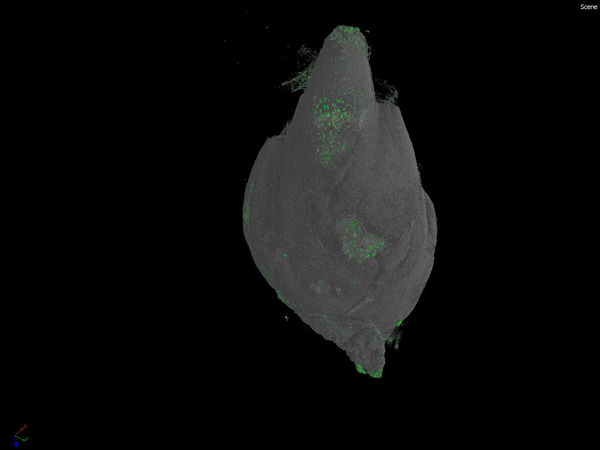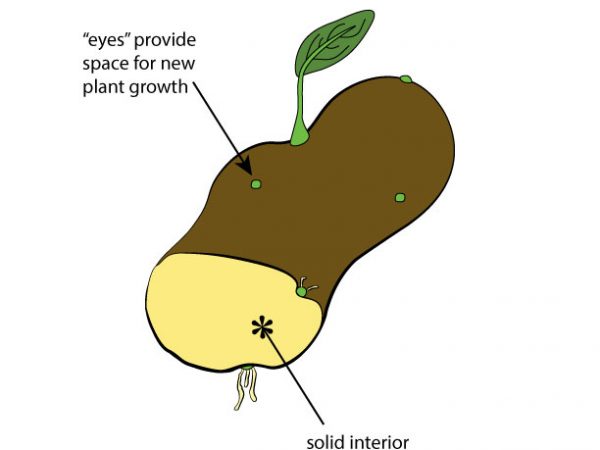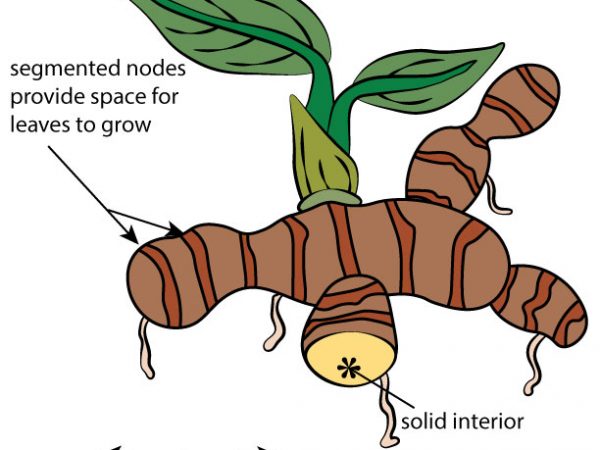Plants may seem like some of nature’s most passive creatures, but some have a say in how they live and even where they live.
Cody Howard, a Ph.D. candidate in the Cellinese Lab at the Florida Museum of Natural History, is hot on the trail of geophytes, plants with underground storage structures, such as tubers and bulbs. Geophytes use these organs as repositories for necessities, such as carbohydrates and water, and are found across the plant tree of life – and in nearly all grocery stores and nurseries.
“Sometimes people don’t realize that we come in contact with certain geophytes on a regular basis,” Howard said. “They’re things that we can find all over, like potatoes, lilies, onions and taro.”
Geophytes thrive in habitats that experience short, intense growing periods, such as alpine and arid landscapes. Thanks to their built-in cooler of food resources, some geophytes can grow entirely underground, even after most people might assume they’re long gone. For some geophytes, this dormant period – a plant’s version of hibernation – is more than a time for rest and relaxation. It’s a critical period of cellular division for the plant.
“Their below-ground resources actually fuel growth while the plant remains underground,” Howard said. “This way, the plant is ready to rapidly expand its leaves as soon as conditions are right.”
 Tubers, such as potatoes, are some of the most familiar geophytes. Like rhizomes and corms, tubers have solid interiors, but instead of nodes, they have “eyes” from which roots and shoots originate.
Tubers, such as potatoes, are some of the most familiar geophytes. Like rhizomes and corms, tubers have solid interiors, but instead of nodes, they have “eyes” from which roots and shoots originate. Bulbs are unique among geophytes for having layers of modified leaves used for food storage. Onions, tulips and lilies are some of the most familiar examples of bulbs.
Bulbs are unique among geophytes for having layers of modified leaves used for food storage. Onions, tulips and lilies are some of the most familiar examples of bulbs.
A geophyte’s goal is to break the soil surface without using too much energy. Sometimes, this means moving to a completely new position in the soil.
“A lot of the time, someone’s first thought about a plant is that it can’t move, or that it’s sedentary,” Howard said. “With some geophytes, that’s just not the case.”
Specialized roots called contractile roots can shrink and swell to move the plant. This strategy works especially well in the plant’s early years when it is small and will encounter less resistance from the soil. Other times, the plant creates a tunnel through which it can guide the bud, the part of the plant responsible for most of the cellular division.
Why might a geophyte need to move? Often, it’s to escape a disturbance. For example, if the surrounding soil is washed away or displaced by an animal, repositioning can put the bud in an optimal position for growth by protecting it from freezing or scorching temperatures. Some geophytes can spend years working their way through the soil, their underground organs twisting and turning throughout the growing season, searching for just the right spot.
 Ginger, bamboo and irises are geophytes with underground stems known as rhizomes. Rhizomes grow horizontally in the soil and have nodes from which leaves can grow.
Ginger, bamboo and irises are geophytes with underground stems known as rhizomes. Rhizomes grow horizontally in the soil and have nodes from which leaves can grow. Unlike bulbs, corms have a solid interior. This interior is actually a corm’s version of a stem. Crocuses and gladiolas are common examples of plants with corms.
Unlike bulbs, corms have a solid interior. This interior is actually a corm’s version of a stem. Crocuses and gladiolas are common examples of plants with corms.
This phenomenon captured the attention of German botanist Norbert Pütz, a researcher at the Aachen Institute for Biology. In his studies – the first of their kind – Pütz developed detailed illustrations and photographs that showed the hidden movements of a variety of geophytes over time.
Pütz was able to shed light on the actual mechanisms of root shrinking and swelling, which results in a pulling force that eases the underground structure deeper into the soil. He evaluated which strategies were most efficient by measuring the underground distance traveled by a variety of geophytes such as carrot, daylily and iris relatives, and he was one of the first to explain how this movement impacted plant growth.
He discovered, for example, that many geophytic monocot seedlings (think onions, taro or lilies) can pull their below-ground organs nearly 4 inches into the soil. He also found it is easier for smaller organs that can twist more to reach greater depths. This information is helpful in tracing geophytes’ forms and their functions as well as overall plant biodiversity.
Now, researchers are getting an even clearer picture of how geophytes get around.

Florida Museum image by Cody Howard
CT scanning, a non-destructive technology that can reveal the inner workings of an organism, offers scientists a way to study living plant structures. Botanists can now study the movement of geophytes throughout the growing season and capture changes in soil depth, physical characteristics and fluctuations in resource storage – parts of the geophyte life cycle that can’t be seen otherwise.
“Using this technology, we can now readily quantify not only the hidden movement of geophytes, but also capture and quantify additional structural changes that occur during these movements,” Howard said. “There’s so much more to reveal about the evolutionary and developmental forces that have shaped this amazing underground diversity that we see today … when they decide to show themselves.”
Celebrate #WorldGeophyteDay on June 30 by posting about your favorite geophyte on social media.
Source: Cody Coyotee Howard, cchoward@ufl.edu
- Learn more about Pütz’s work.



